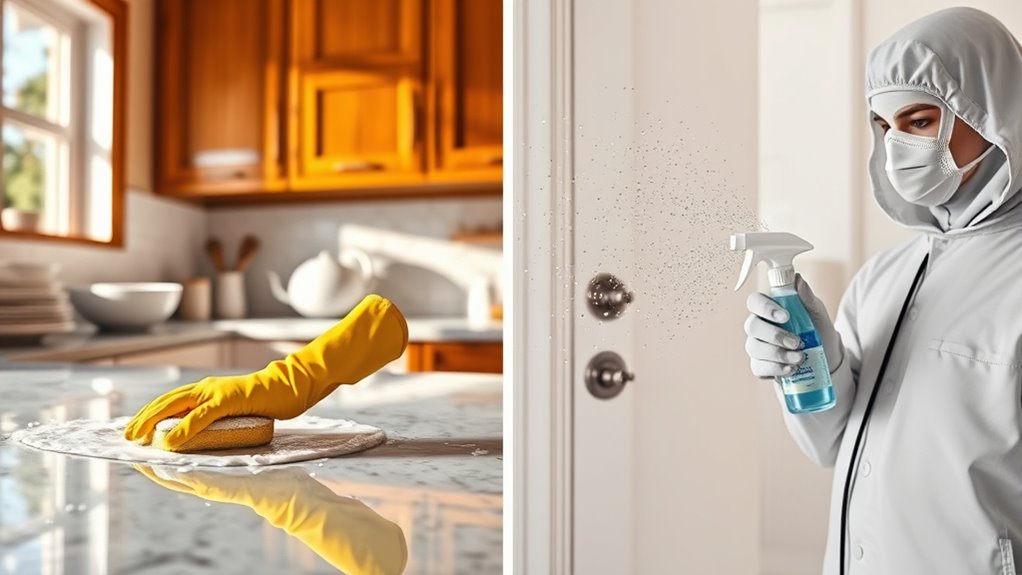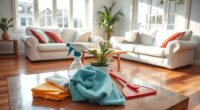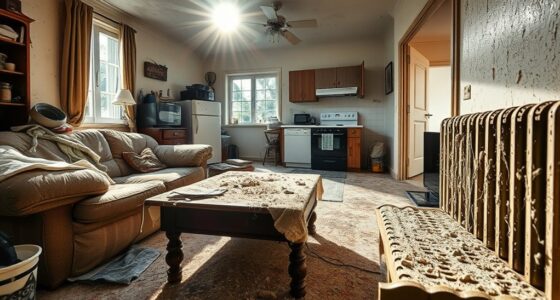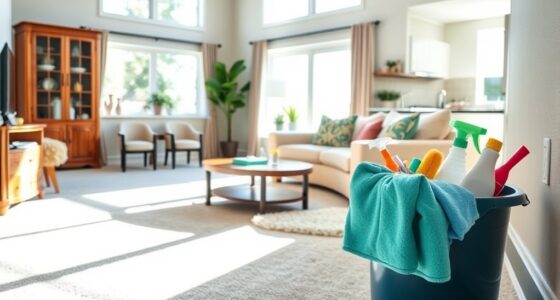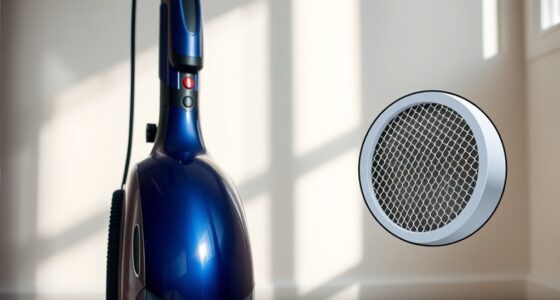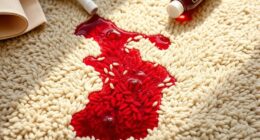Cleaning’s all about removing visible dirt and contaminants using soap or detergent. Disinfecting goes a step further; it targets germs on surfaces after cleaning to effectively reduce their presence. You should always clean first since disinfectants can’t work on dirty surfaces. If you want to keep high-touch areas sanitized, consider doing that regularly. You’ll find even more helpful tips on how to properly manage the cleaning and disinfecting process.
Key Takeaways
- Cleaning involves removing visible dirt and contaminants using soap or detergent, making surfaces look clean.
- Disinfecting targets germs on cleaned surfaces, using EPA-approved products to eliminate pathogens effectively.
- Sanitizing reduces bacteria to safe levels according to health standards, often following cleaning or disinfecting processes.
- Always clean surfaces first before disinfecting, as disinfectants are ineffective on dirty surfaces.
- High-touch surfaces require routine sanitizing to minimize germ transmission, especially in communal settings.
Understanding Cleaning, Disinfecting, and Sanitizing
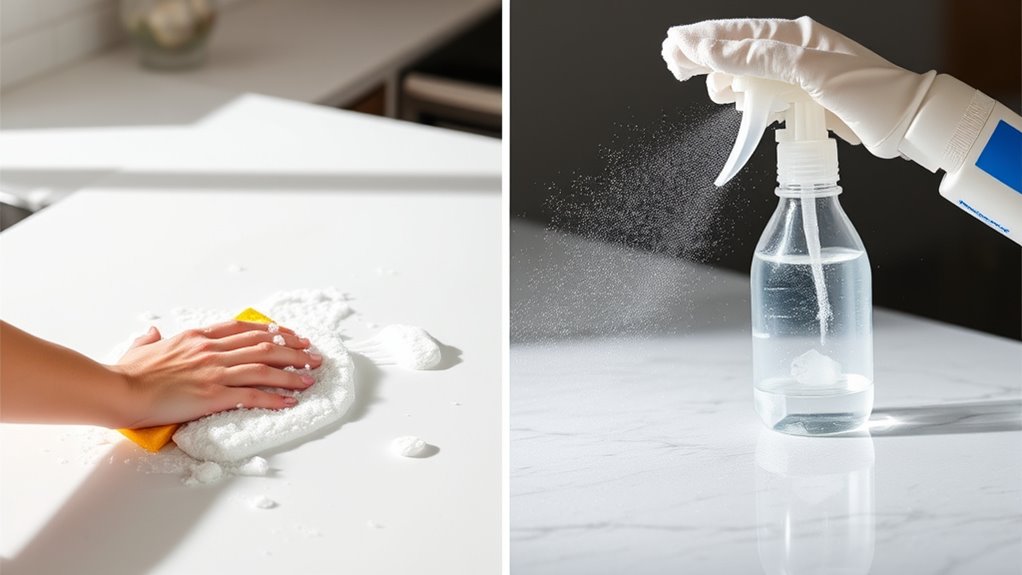
When it comes to keeping your home or workspace safe, understanding the differences between cleaning, disinfecting, and sanitizing is crucial.
Cleaning involves removing visible dirt and contaminants using products like soap or detergent. However, to effectively kill germs, you need to follow up with disinfecting, which targets those germs on surfaces. Regular vacuuming techniques can help maintain cleanliness by removing dirt before disinfecting. Additionally, using energy-efficient appliances can contribute to a healthier environment by ensuring that cleaning processes are not only effective but also sustainable. Using vacuums with HEPA filters can further enhance the cleaning process by trapping allergens and improving indoor air quality.
Remember, disinfectants must be applied to cleaned surfaces since dirt can hinder their germ-killing action.
Sanitizing reduces bacteria to safe levels defined by health standards and can be achieved through either cleaning or disinfecting. For high-touch surfaces, routine sanitizing is recommended, especially in settings like childcare.
Always look for products with EPA registration to verify they meet efficacy and safety standards for public health. Additionally, maintaining a healthier lifestyle through regular cleaning practices supports overall well-being in your environment.
The Cleaning Process: Steps and Importance
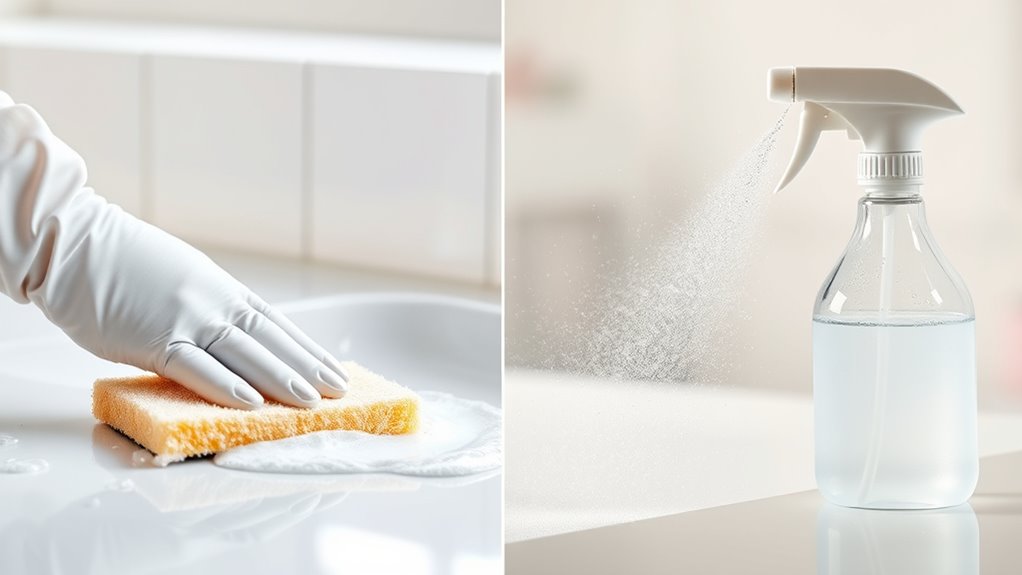
While many people overlook the cleaning process, it’s vital for maintaining a healthy environment. Effective cleaning removes visible and invisible contaminants using cleaning products like soap or detergent. Regular appliance servicing can significantly enhance the effectiveness of the cleaning process, ensuring that appliances not only function well but also contribute to a hygienic space. Additionally, maintaining proper venting in appliances like wood stoves can further improve air quality and safety, as regular inspection of the chimney and flue system prevents creosote buildup and chimney fires. This step is imperative, especially for high-touch surfaces where germs can thrive.
To guarantee safe cleaning, follow these steps:
- Gather appropriate cleaning equipment.
- Apply the cleaning product to surfaces.
- Scrub to loosen contaminants.
- Rinse with water to remove debris. Regular cleaning and servicing improve appliance efficiency and help maintain a hygienic environment.
The Disinfecting Process: How It Works
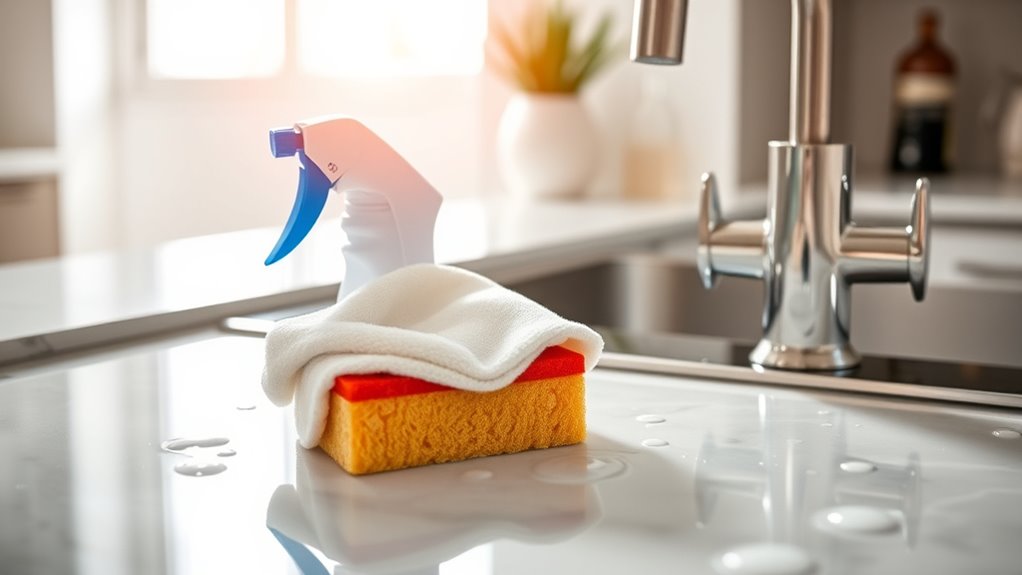
The disinfecting process involves applying EPA-approved products to inanimate surfaces to effectively kill germs, bacteria, and viruses. Before you disinfect, make sure you’ve completed prior cleaning, as dirt and debris can hinder the effectiveness of the disinfectant. Regular air purifier maintenance can also assist in reducing airborne pathogens in the environment, as HEPA filters capture a significant amount of these contaminants from the air. Additionally, maintaining color accuracy in your home cinema can help create a visually appealing environment that encourages proper cleaning and upkeep.
Once applied, surfaces must remain wet with the disinfectant for the time specified on the product label to achieve maximum effectiveness. Remember, disinfectants are regulated by the EPA, so check for an EPA registration number on the label to confirm safety and efficacy.
Common choices include bleach solutions and hydrogen peroxide-based products, which should be used according to the manufacturer’s instructions for best results. Additionally, ensure that proper airflow is maintained around the area being disinfected to enhance the effectiveness of the cleaning process.
When to Clean, Sanitize, or Disinfect

Here’s the revised content with the new sentence added:
How do you know when it’s time to clean, sanitize, or disinfect? Understanding the differences can help you maintain a healthy environment. Here’s a quick guide:
- Clean: Always start with cleaning to remove dirt and contaminants. Disinfectants can’t work on dirty surfaces. Regular cleaning can also help maintain the performance of various appliances. Additionally, ensuring that surfaces are airtight coolers can enhance the effectiveness of your cleaning efforts. Regular cleaning can also prevent the spread of tick-borne diseases by eliminating potential pest habitats.
- Sanitize: Use this on high-touch surfaces and food-contact areas to lower bacteria to safe levels.
- Disinfect: Essential after someone in your home has been ill, especially in childcare settings to stop virus spread.
- EPA Registration: Verify products claiming to sanitize are registered with the Environmental Protection Agency (EPA) and follow usage instructions.
- It’s also important to check soil moisture before watering indoor plants to avoid overwatering, which can lead to contamination.
Tips for Effective Cleaning and Disinfection
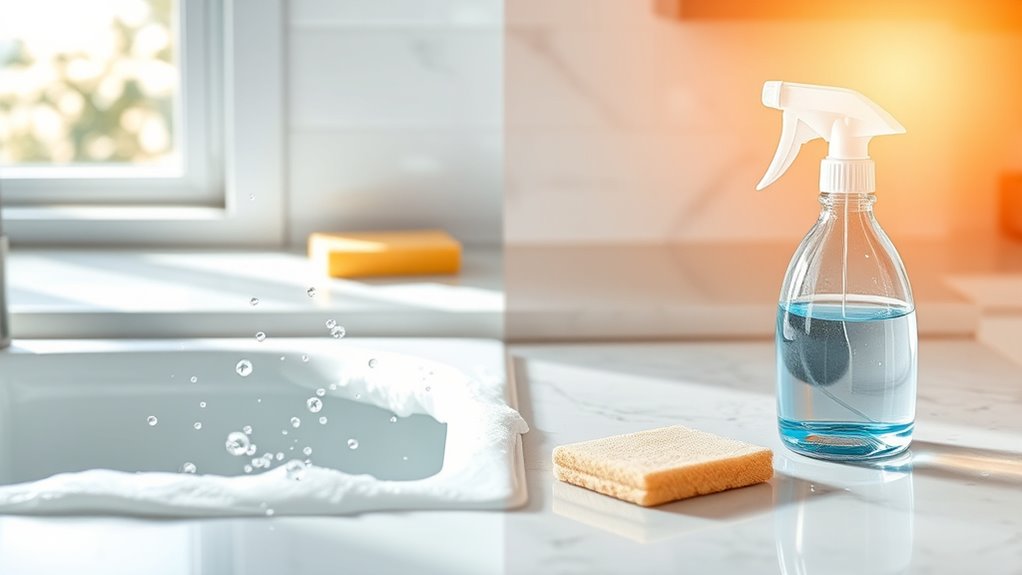
Effective cleaning and disinfection are essential for maintaining a healthy home. Always start by cleaning surfaces with soap or detergent to remove dirt and debris before applying disinfectants. This step is important for effective germ elimination.
Use EPA-approved disinfectants and make sure surfaces stay wet for the required contact time to maximize effectiveness. For high-touch areas like doorknobs and faucets, routine cleaning followed by disinfecting is critical to reduce germ transmission. Additionally, be aware that certain essential oils can provide antibacterial properties that enhance your cleaning routine. Incorporating aromatic cleaning methods can also help improve indoor air quality while maintaining cleanliness. Maintaining consistent routines can also help establish a healthier environment for children in the home.
When handling laundry from sick individuals, separate their items, wash them in hot water, and consider adding a laundry disinfectant or bleach.
Don’t forget to regularly clean and disinfect devices such as smartphones and smartwatches, using appropriate scratch-free wipes and disinfectant wipes to keep them germ-free. Additionally, incorporating essential oils known for their antibacterial properties can enhance your cleaning routine.
Frequently Asked Questions
Is Cleaning and Disinfecting the Same Thing?
No, cleaning and disinfecting aren’t the same thing.
When you clean, you’re removing dirt and debris from surfaces, often using soap or detergent.
Disinfecting, on the other hand, targets and kills germs after you’ve cleaned.
If you skip cleaning first, disinfectants can’t work effectively because dirt can block their action.
So, for the best results in keeping your spaces hygienic, always clean before you disinfect.
Understanding this distinction is essential for maintaining a healthy environment.
Can You Disinfect Without Cleaning?
Imagine trying to paint a wall covered in grime; you wouldn’t get a smooth finish, right?
That’s exactly what happens when you try to disinfect without cleaning first. You can’t effectively kill germs on dirty surfaces because dirt blocks disinfectants’ action.
Think of cleaning as prepping the canvas. Once you’ve removed visible contaminants, disinfectants can do their job properly, ensuring a clean, germ-free environment.
What Is the Difference Between Cleaning and Disinfecting Wipes?
When you’re choosing between cleaning and disinfecting wipes, you need to understand their functions.
Cleaning wipes remove dirt and grime, making surfaces look better, while disinfecting wipes kill germs and bacteria.
Disinfecting wipes contain powerful chemicals that require surfaces to stay wet for a certain time to be effective.
Always check the labels to guarantee you’re using the right type for your needs, as mixing them can reduce their efficiency.
What Is the Difference Between Disinfectant and All Purpose Cleaner?
Did you know that up to 80% of infections spread through touch?
When you grab an all-purpose cleaner, you’re tackling dirt and grime, but it won’t necessarily kill germs.
On the other hand, a disinfectant is your go-to for eliminating bacteria and viruses.
Just remember, disinfectants need a clean surface to work effectively.
Conclusion
In summary, knowing the difference between cleaning and disinfecting is essential for maintaining a healthy environment. Did you know that proper disinfection can reduce the number of germs by up to 99.9%? By following effective cleaning and disinfecting practices, you can protect yourself and your loved ones from harmful pathogens. Remember, it’s not just about making surfaces look clean; it’s about ensuring they’re truly safe. So, make these habits a regular part of your routine for a healthier home!

